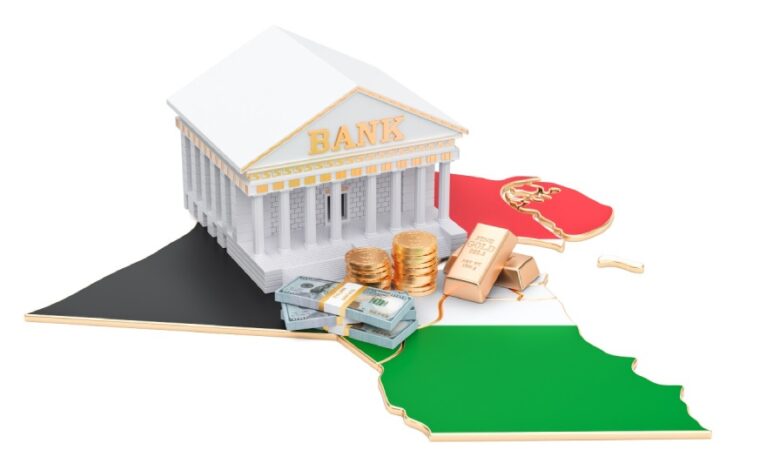Kuwaiti banks power economic growth and safeguard stability
By the end of July 2025, the banking sector’s regular accounts surpassed KD 40.2 billion for the first time, with financial derivatives rising 47.9% to KD 15.94 billion and trust assets reaching KD 6.31 billion, up 33.2% annually.

-
By the end of July 2025, banks issued KD 12.37 billion in letters of guarantee, highlighting their strength in supporting projects and reinforcing Kuwait’s position as one of the Gulf’s strongest banking sectors.
-
The number of banks operating in Kuwait remained stable at 21 by the end of July 2025, unchanged from July 2024 and December 2024, reflecting the solidity of the banking sector structure.
Kuwaiti banks have evolved beyond traditional roles, becoming a cornerstone of the national economy. They now fund major projects, provide liquidity for government debt, support private sector growth, secure trade deals, and offer global investment solutions, demonstrating their strategic role in driving financing and economic development, reported Al Anba newspaper.
This transformation is evident in the regulatory accounts, which, for the first time, surpassed the KD 40 billion mark by the end of July 2025. The milestone highlights the increasing influence of the Kuwaiti banking sector in promoting financial stability and adapting to ongoing economic changes.
The achievement reflects not only liquidity strength but also the robustness of the regulatory and banking framework, positioning Kuwaiti banks as strategic partners for both the state and investors. Their expanded role underscores their significance in sustaining economic development and supporting Kuwait’s broader financial ambitions.
Challenges remain for Kuwaiti banks, including global interest rate fluctuations, regional competition, and pressures associated with digital transformation. Yet, the sector’s achievements so far position it strongly to expand its presence as a regional player in the coming years, consolidating Kuwait’s role as an influential financial center in the Middle East.
Regulatory accounts provide insight into economic activity, covering transactions that banks manage for or undertake on behalf of third parties. These include letters of guarantee for projects, documentary credits for foreign trade, bankers’ acceptances, as well as assets managed in trust and financial derivatives. While these do not appear directly on banks’ balance sheets, they indicate the strength and vitality of the banking system.
The recent rise in regulatory accounts to over KD 40 billion is more than a sign of expanded operations; it reflects the strategic role banks play in stabilizing the national economy. Amid global economic fluctuations, Kuwaiti banks have absorbed shocks by offering alternative financing and investment tools, whether through financial derivatives or enhanced documentary credits for foreign trade.
This growth also highlights the diversification of banking activities and the expansion of the customer base. Services now go beyond traditional lending to include managing investments for individuals and institutions, both domestically and internationally. Such flexibility allows banks to diversify income sources and reduce reliance on direct loans.
Moreover, the increase in regulatory accounts strengthens investor confidence and positively impacts credit ratings, showcasing the banking system’s ability to manage large obligations. It also demonstrates customer trust in local institutions over foreign alternatives, reinforcing Kuwait’s position as a regional financial hub.
By July 2025, total statutory accounts reached KD 40.2 billion, up from KD 32.6 billion in July 2024, a 23.3% increase, with a seven-month rise of 12.9% since the start of the year, reaching KD 35.6 billion by December 2024.
The number of banks operating in Kuwait remained stable at 21 by the end of July 2025, unchanged from July 2024 and December 2024, reflecting the solidity of the banking sector structure.
Cash balances reached KD 5.4 million in July 2025, compared to KD 5.6 million in July 2024, a 3.6% decline. Since the beginning of the year, they have decreased by 14.3%, reaching KD 6.3 million by the end of December 2024.
Assets managed in a fiduciary capacity rose to KD 6.3 billion by July 2025, up from KD 4.7 billion in July 2024, recording an annual increase of 34%. During the seven-month period since the start of the year, they increased by 28.6%, reaching KD 4.9 billion by December 2024.
Letters of credit reached KD 1.3 billion in July 2025, up from KD 1.12 billion in July 2024, marking a 16.1% annual increase, while letters of guarantee reached KD 12.37 billion, up 6.4% annually and 3.1% since the start of the year.
Bank acceptances rose to KD 952.5 million in July 2025 from KD 648.5 million in July 2024, a 46.9% increase, and grew 26.4% since January, reaching KD 753.5 million by December 2024. Irrevocable obligations stood at KD 1.3 billion, down 7.1% annually but up 8.3% since January. Total contingent liabilities reached KD 15.9 billion, reflecting 7.4% annual growth and a 4.1% increase since the start of the year.
Investments in financial derivatives surged to KD 15.9 billion in July 2025, up 47.5% annually and 21.4% since the beginning of the year.
Exceeding the KD 40 billion mark in statutory accounts signals a new phase for Kuwaiti banks, positioning them as major players in domestic financing and global financial transformations. Continued growth will consolidate Kuwait’s banking sector as one of the strongest in the region, capable of supporting development and maintaining economic stability.
Follow The Times Kuwait on
X, Instagram and Facebook for the latest news updates













